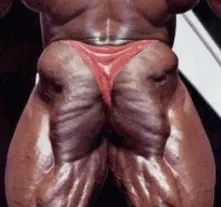Harmoniously developed buttocks are not only a subject of bodily aesthetics, but also muscle group, affecting the general physical condition, strength and health of a person. As is known, in total, the muscle group of the lower extremities, and these are the muscles of the thighs and buttocks, is approximately half of the total muscle mass our body. The tone of the buttocks and their physical condition largely determine general health level human, and especially the genital area, since all its organs are located in the pelvic area.
We can also say with considerable confidence that without well-developed buttocks, you will not have harmoniously beautiful legs, nor a powerful and healthy back, and therefore, no impressive strength indicators in bodybuilding and fitness.
It is thanks to the presence of massive gluteal muscles in our body that man, at one time, was able to fully adapt to walking on two limbs. Acting as a pelvic extensor, the gluteus maximus muscle does not play a particularly important role during normal walking, since straightening the pelvis is performed to a greater extent by the ischial-popliteal muscles. You can check this yourself while walking by touching your buttocks to feel that the muscles are almost not tense. But as soon as the load increases, for example, during running or fast walking, the muscles of the buttocks begin to actively connect to the work, for more powerful and energetic extension of the pelvis and straightening of the body.
The buttocks are one of the largest muscle groups in the human body. However, despite its impressive size, pump gluteal muscles and giving them the much-needed exercise is not so easy. The corresponding section of our website will help us with this...
Post Views: 139


